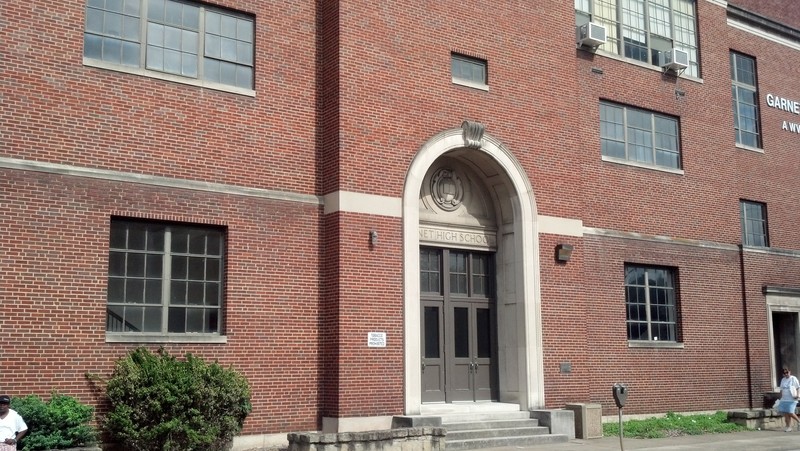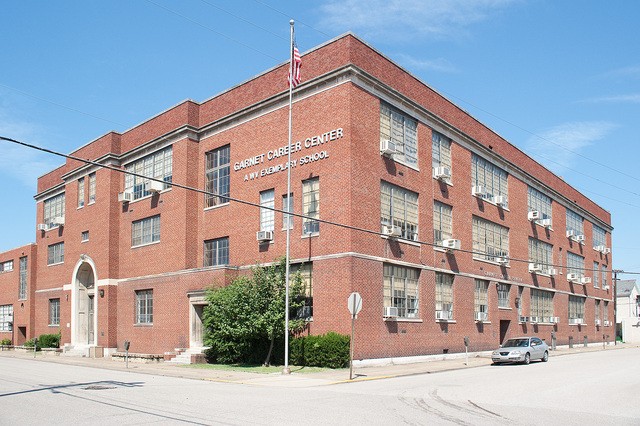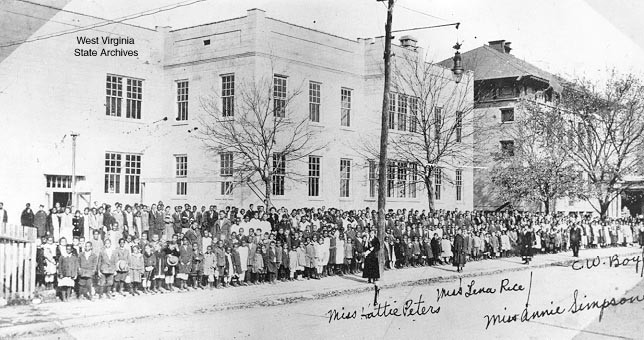Garnet High School
Introduction
Text-to-speech Audio
Images
Garnet High School from Shrewsbury Street

Street View

Garnet High on old Jacob's Street Location

Backstory and Context
Text-to-speech Audio
Garnet High School was one of three all Black high schools in Kanawha County, WV; the other two schools were the West Virginia State College Teachers Training High and Washington High at London. During the era of segregated schools in Kanawha County, the Black students were picked up by bus two hours before school started, and were picked up from school after the white students were taken home. The Black students were leaving home before the sun came up, and getting home after the sun had already set.
C.W. Boyd was a Kentucky native who moved to Charleston, WV in 1892 to start his teaching career. He organized Garnett High School in 1900 out of a graded school that had already been established. Mr. Boyd was Garnett’s principal for the school’s first eight years, and left to become the Supervisor of Charleston Negro Public Schools. J.F.J. Clark replaced Mr. Boyd, and the high school gained its own separate building from the grade school in 1909. In 1927, the new location of Garnett High School along Lewis and Shrewsbury Streets was proposed. The new building had such amenities as an auditorium, gymnasium, library, cafeteria, swing rooms, a domestic science room, mechanical drawing, printing, and science labs. The name was changed from Garnett High School to Garnet High School when the school moved into the new building, because the stone cutting company made a spelling error and the Board of Education did not require them to repair it.
Scott M. Brown was Garnet’s third principal, serving from 1946 to 1949, and left to become the Assistant Superintendent of Schools. Harry E. Dennis was the last principal to serve Garnet High School. After the 1954 Supreme Court Decision that “separate but equal” was unconstitutional, Garnet graduated their last class in 1956. The building was then utilized at the John Adams Junior High for a brief period of time before becoming the Garnet Education Center. Today Garnet still serves the same purpose as the Garnet Career Center. In 1990, Garnet was added to the National Register of Historic Places.
Henry Highland Garnet was born a slave in Maryland in 1815. Garnett and his family escaped slavery and moved to New York before he was ten years old. Garnett became an abolitionist in the 1840s, and gave a famous speech, “Call to Rebellion,” in 1843 that persuaded slaves to rise up against their owners and to free themselves. Garnett was seen as a radical in the abolition movement, and was the first Black speaker to give a speech in the House of Representatives. He served as the United States Minister and Counsel General in Liberia in 1881, and died there in 1882.
Sources
1. Wooster, Hazel P. "Garnet High School." e-WV: The West Virginia Encyclopedia. 28 January 2013. Web. 20 September 2014. 2. Henry Highland Garnet. [Internet]. 2014. The Biography.com website. Available from: http://www.biography.com/people/henry-highland-garnet-39704 [Accessed 20 Sep 2014]. 3. Wooster, Hazel P. "Garnet High School." e-WV: The West Virginia Encyclopedia. 28 January 2013. Web. 20 September 2014. African-American Heritage Trail of WV. West Virginia Division of Tourism. www.callwva.com.
Collins, Rodney S. National Register of Historic Places Nomination Form. April 20, 1990. Accessed December 05, 2016. http://www.wvculture.org/shpo/nr/pdf/kanawha/90001068.pdf.
